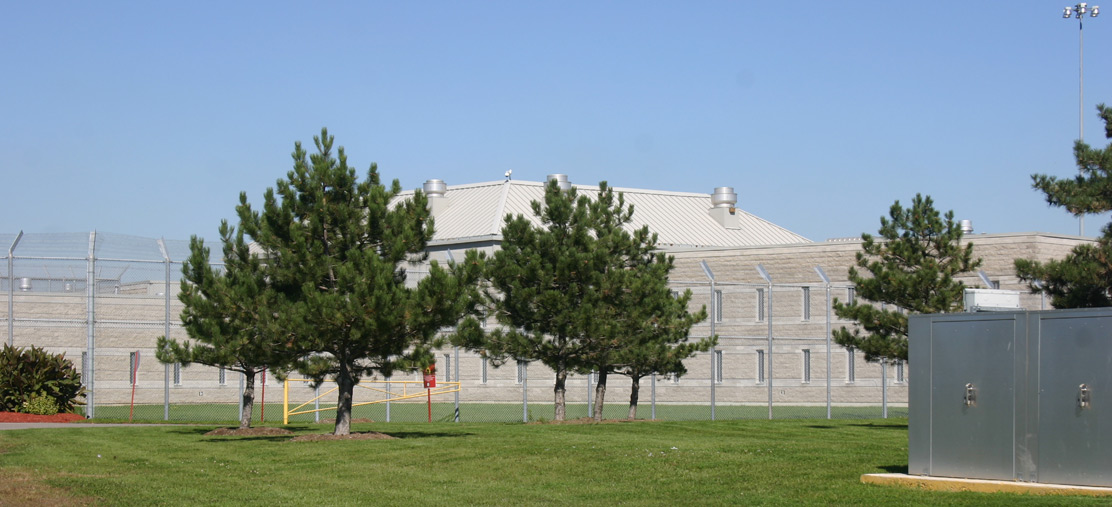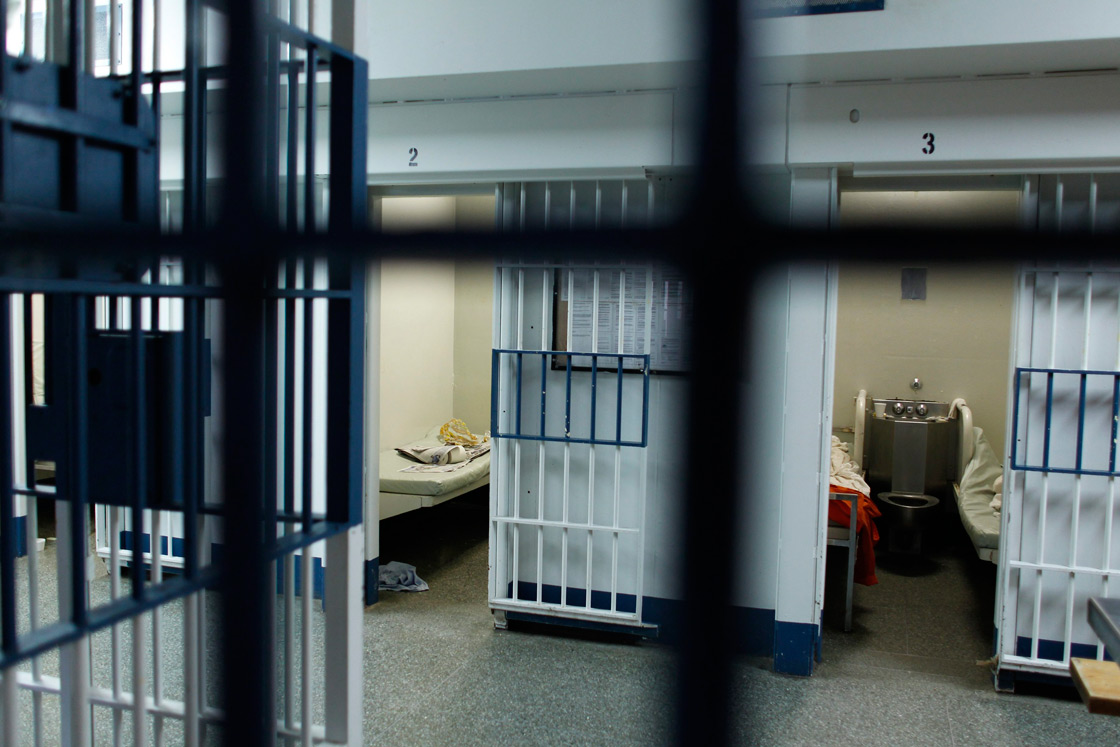Canadians know the story of Lucia Vega Jimenez, the Mexican woman who hanged herself in a Canada Border Services cell in Vancouver’s airport. But not because of the people responsible for her wellbeing: We know her story because members of the Mexican-Canadian community came forward and made it impossible to ignore.

Until recently, Canada’s Border Services Agency did not tell anyone when people – refugee claimants, immigrant detainees – died in its custody.
Global News found details on many deaths through painstaking searches of coroner’s reports and databases, which it then sent to CBSA, and which the agency then confirmed.
But Global News’ analysis of coroner’s reports has found CBSA’s failure to learn from its own mistakes may have contributed to more deaths.
Recommendations made in a 2007 inquest into the death of Joseph Fernandes found better communication regarding his medical condition between the CBSA and the various agencies where he was transferred could have saved his life.

CBSA said that in response to the recommendations it created a detainee medical form in 2007, which is completed before an individual enters a detention facility. CBSA updates the form every 45 days or when an individual’s medical condition changes. But no one updates the form, CBSA told Global News, if the person enters a “facility where a medical professional is present,” which includes all provincial prisons.
CBSA would not say whether the form follows a detainee from facility to facility – which was the source of the problem in the first place.
(UPDATE – CBSA responded after this story was published. Read their response.)
It appears this procedure didn’t work: A 2011 inquest into the 2009 death of Czech citizen Jan Szamko found the same communication breakdown contributed to tragic, fatal results.

“The CBSA continued to work on procedures in conjunction with the recommendations arising out of the Jan Szamko inquest,” CBSA wrote in an emailed response to queries from Global News.
At least nine people have died in immigration detention since 2000, most of them while held in a provincial jail or non-CBSA facility.
In its efforts to learn more about people who have died while being held in immigration custody, Global News contacted CBSA, Ontario and Quebec’s coroners’ officers, Ontario’s Ministry of Community Safety and Correctional Services, the Immigration and Refugee Board and an American police department, as well as filing several Access to Information requests and researching media reports.
Some people still remain nameless – their personal information withheld by CBSA due to unspecified privacy reasons (even though, as Global News noted in its queries, federal correctional bodies regularly publish the names, ages and institutions of inmates who die in federal prison facilities).
Here is what we know:
Sheik Kudrath, 45, Citizenship unknown
Died in hospital on April 22, 2000 after collapsing while playing cards at Toronto West Detention Centre, where he was on “Immigration Hold,” according to a coroner’s report. Although he had complained of recurrent chest pain in telephone calls to his family, neither he nor his family ever reported it to the institution. This death predates the creation of CBSA, though the practice of immigration detention began long before that agency was created.
Joseph Fernandes, 72, India
Placed in immigration detention at CBSA’s Toronto facility after he admitted to accepting money to accompany four people from India, who then claimed refugee status. He was held because it was believed that he would not leave Canada, and because he was being investigated for human smuggling, according to an Immigration and Refugee Board transcript.
“I wish to go home,” said Fernandes at an IRB hearing. “I’ve got blood pressure and diabetes.”
He did not tell the board he’d had a heart attack. He was on medication but did not tell CBSA staff.
He was taken to the courthouse but was not accepted by prison escorts “due to his heart condition and medications that were in his possession which were not labeled.” After being taken to a hospital and cleared by medical staff he was too late to go to court so was held at the Peel Regional Police Airport Division overnight. He was taken back to the courthouse the next day, then sent to Maplehurst Detention Centre in Milton, where nursing staff screened him but found nothing wrong.
Four days later he complained of chest pain, was taken to hospital and died.
The coroner’s inquest recommended developing a process to facilitate sharing relevant medical information between various government agencies.
“It would seem from the evidence that a simple form which stayed with the detainee would be the easiest way to get around this,” the coroner wrote.
According to CBSA, Fernandes was facing criminal charges and was in the custody of the province of Ontario – not CBSA – at the time of his death, though he was also subject to an immigration warrant that would have taken effect after the resolution of his criminal charges. Regardless, the jury at the coroner’s inquest only made recommendations to CBSA, which was a party with standing at the inquest.
Jan Szamko, 31, Czech Republic
Made a refugee claim he later withdrew. He missed two removal flights and a scheduled interview, was taken into custody by CBSA on November 28, 2009 and held at the CBSA Immigration Holding Centre in Toronto. There, he was examined by a physician who suggested he might have problems with his adrenal glands, though tests did not confirm this.
Seven days later, still in custody, he complained of chest pain and was taken to hospital. He was discharged with a diagnosis of heartburn and returned to the holding centre.
“Over the next several hours, Mr. Szamko’s behaviour changed dramatically,” wrote the coroner. “He ceased to communicate verbally; he urinated and defecated in his room and on his person; and he would no longer cooperate with staff.”

On December 6, Szamko was transferred to the Toronto West Detention Centre and placed in a segregation cell, where he was checked on every 20 minutes, according to procedure.
“Throughout his stay in TWDC, Mr. Szamko was usually noted to be lying on the floor, and often was covered in urine and feces,” wrote the coroner.
Szamko was seen by nurses, physicians and a psychiatrist. None identified any acute medical issues. The psychiatrist diagnosed him with Ganser syndrome – a dissociative disorder characterized by giving approximate or nonsensical answers, often associated with prison inmates. The psychiatrist prescribed medication, though it was not administered before Szamko’s death.
Szamko was found lying unresponsive in his cell on December 8, 2009. A post-mortem examination determined the cause of death was a tense pericardial effusion (an accumulation of fluid around the heart). The examination also found signs of damage to his brain, kidneys and liver, as well as a number of minor injuries, including abrasions to the wrists consistent with handcuffs, that aren’t thought to have contributed to his death.
The coroner’s jury recommended inmates with medical concerns have their vital signs checked daily, and that CBSA create a procedure for sharing detainees’ medical information between institutions; that a detainee’s medical file accompany them when they’re sent for medical assessment or transferred to a detention facility; that emergency contact information for detainees be obtained upon admission to the Immigrant Holding Centre and be kept on site.
Kevon O’Brien-Phillip, 24, Trinidad and Tobago
Killed by fellow inmates at Toronto’s Don Jail on January 2, 2010, according to media reports about the case. According to a report in the Toronto Star, Phillip was acquitted of three sets of charges related to stealing cars but continued to be held at the jail for immigration reasons. According to CBSA data, he was held for removal to Trinidad and Tobago. The data, including his date of death, matches media reports of the trial relating to his case.
Phillip was fatally beaten by other inmates at the jail, says a report in the Star. Four people were convicted of manslaughter in his case.
Unidentified man, 58, United States of America
Appears in CBSA data obtained by Global News. Died at the CBSA Immigration Holding Centre in Laval on August 26, 2010 at 5 a.m. Quebec’s coroner’s office was unable to provide any information on this death and CBSA refuses to provide further information – including name or cause of death – based on privacy concerns.
Shawn Dwight Cole, 34, Jamaica
Died at the Toronto East Detention Centre on December 26, 2012. Matching this date with a list of deaths in custody from Ontario’s Ministry of Community Safety and Correctional Services also obtained by Global News suggests the death was of natural causes, though as a coroner’s inquest has not yet been completed the exact circumstances of the death remain unknown.
Cole told the Immigration and Refugee Board in 2010 that he had regular seizures but did not provide any medical documentation to back up the claim. Cole had a lengthy criminal history, including drug and gun-related offences and failure to comply with bail conditions. He was ordered deported back to Jamaica but died in custody before that happened. He left behind two Canadian-born children.
Unidentified man, 54, Jamaica
Appears in CBSA data obtained by Global News. According to the limited information in the database, he was held at the Toronto West Detention Centre until March 4, 2013. Matching this date with a list of deaths in custody from Ontario’s Ministry of Community Safety and Correctional Services obtained by Global News suggests the death was of natural causes.
Brent Ross, spokesperson for Ontario’s Ministry of Community Safety and Correctional Services, said an inmate from the Toronto West Detention Centre passed away in hospital on March 5, 2013.
The Ministry could not confirm whether this was the same person who appears in CBSA records.
Lucia Vega Jimenez, 42, Mexico
Video: Security footage of Jimenez’ final hours in immigration detention
Killed herself at a CBSA facility in the Vancouver Airport on December 20, 2013. Hanged herself in the bathroom area of the windowless holding cell, where she was being held for eventual transfer back to Mexico.
The jury at a coroner’s inquest into her death heard security contractors at the facility were not performing 70 per cent of checks on inmates due to under-staffing, and that they falsified room check records.
The jury recommended CBSA create a dedicated holding centre for immigration detainees, to be staffed by CBSA employees; allow access to legal counsel, medical services, NGOs, spiritual and family visits and monitored internet access. Telephones and calling cards should also be readily available, the jury recommended.
Suicide prevention training should also be made mandatory for CBSA employees and contractors, the jury said. In a statement, CBSA said that in response to the incident, it has modified the facility and increased oversight and monitoring. It also will “carefully review all findings and recommendations resulting from the inquest.”
Prince Maxamillion Akamai, Age unknown, United States of America
Died in hospital on April 7, 2014. Unlike most of these other cases, he was not technically in immigration detention at the time. According to documents provided by the Immigration and Refugee Board, he was released from detention on April 7, while he was unconscious in hospital. The documents state that he was to report to a CBSA office within seven days of his release from hospital. He died later that same day.
“In the case of Mr. Akamai, when there was a significant change in his medical condition, the CBSA could not argue for continued detention given that he was no longer a flight risk,” said CBSA in response to questions from Global News.
Records from the Immigration and Refugee Board mention that he was convicted of fraud in the U.S.
Joseph Dunn, 43, United States of America
Died in hospital on September 27, 2014 after succumbing to injuries sustained at the Niagara Detention Centre in Thorold, Ontario. A story in Maclean’s states that he used a bed sheet to hang himself from a shower.

According to Joey Smith of the Henry County Police Department in Georgia, a 20-month old child died while in Dunn’s care in 2010. At that time, however, a grand jury failed to indict Dunn. The case was re-opened years later and Dunn was indicted for murder and other charges on September 11, 2014. Detectives then began to search for Dunn and discovered he was attempting to flee to Canada, where he was detained by Canadian authorities.
Press releases from the Niagara Police and CBSA stated that an inmate in immigration custody died on September 27, 2014 at the Greater Niagara General Hospital and that the inmate’s injuries were not suspected to be the result of foul play. Ontario’s Ministry of Community Safety and Correctional Services and the Immigration and Refugee Board could not confirm names or provide any information on the individual due to what they called privacy reasons. The Immigration and Refugee Board could not even confirm whether someone matching this description had appeared before them.
“It is believed that Dunn sustained some sort of self-inflicted injury while in Canadian custody,” reads the statement Smith emailed Global News. In a brief conversation with Global News, he wasn’t even sure Dunn was dead, though CBSA later confirmed that this was the same man who died in Niagara Falls.
“We just haven’t spoken to the authorities up there to confirm it with us that he actually died. But we know he attempted suicide,” Smith said.
“If you happen to get some type of authority from Niagara Police or whoever, that happens to confirm it as well, could you let me know that?”
Global News has since informed him.
Unknown name, Unknown age, Unknown citizenship
Died while in CBSA custody sometime between December 2003 and the present. CBSA mentioned this person in an email to Global News, but gave no further information due to unspecified provisions of the Privacy Act.
Despite a new CBSA policy to issue press releases in the case of detainees’ deaths in order, according to a CBSA email, to “ensure that the public is appropriately informed of a death in custody in a timely and consistent manner,” CBSA has so far refused to provide even basic information, including the the date and location of death that was included in the only such press release CBSA has issued to date.
Having asked CBSA why this is, and having obtained no response, Global News is attempting to find more details.
UPDATE: 1:25 PM Wednesday, October 5, 2014
Approximately three hours after this story was published, CBSA spokesperson Esme Bailey responded to Global News’ outstanding questions, which were originally sent Oct. 30. The full response is pasted below (with questions in bold).
Hello Leslie,
Apologies for the delay in getting back to you. Please find the Canada Border Services Agency (CBSA) response to your follow up questions.
Please advise if you will be updating your online story that was posted this morning.
One of my colleagues pointed out that Corrections Canada regularly releases the names and other information of individuals who have died while in their custody. Why won’t CBSA do the same? If it’s because of the Privacy Act, what specific provisions in that Act prevents this?
See this example: http://news.gc.ca/web/article-en.do?mthd=tp&crtr.page=1&nid=895209&crtr.tp1D=1&_ga=1.59692845.1494612340.1401889030
Additionally, CBSA’s new policy is to ensure that the public is appropriately informed of a death in custody. So, why can’t information that is now going to be routinely released as part of CBSA’s newly-implemented policy, such as the date and location of death, be released in the case of my third unidentified person – for whom you have just refused to give me any information?
Why am I unable to get at least the kind of information that is in your press release?
http://news.gc.ca/web/article-en.do?mthd=index&crtr.page=1&nid=888469
However, as noted above, Corrections Canada issues the name. What’s different in that case?
The CBSA cannot speak for other departments. Different federal departments and agencies are governed by separate pieces of legislation which specify what kind of information can be shared with the public.
The CBSA’s approach to this issue is designed to directly support the Agency’s mandate and governing legislation.
The CBSA has recently changed its policy with regard to the publication of information relating to a death in custody to allow the publication of the date and place of a death of an individual being held by the CBSA. These policy changes strengthen the alignment of the Agency’s practices with those of other Canadian law enforcement organizations.
The changes to the CBSA policy will not be applied retroactively and as such, we will not be able to provide further information to cases that are not already in the public domain.
It’s a new form every time someone gets transferred? Or does the form come with them if they are transferred from a CBSA facility to a provincial jail, for example?
The Detainee Medical Form is completed and accompanies the detainee when they are sent to a detention facility. The form would accompany a detainee being transferred from a CBSA facility to a provincial jail.
If you have any additional questions for the CBSA, please call 613-957-6500/1-877-761-5945 or send an email to questions@cbsa-asfc.gc.ca.
Best regards,
Esme
READ THE SERIES:
Unwelcome: Canada’s spotty record on would-be refugees
Jailed with no charge, no sentence, no oversight
Canada pays thousands of Roma to abandon refugee appeals, leave country
Deaths in detention: CBSA’s fatal failure to learn from its mistakes
Tell us your story: Do you have experience as a refugee or immigration detainee in Canada? We’d love to hear it.
Note: We may publish your submission in future stories







Comments